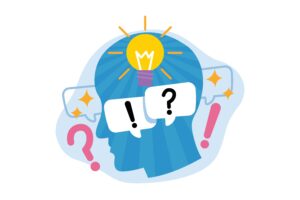How a Coaching Framework Leads to Increased Win Rates

Your coaching framework should cover the most essential coaching areas
2nd in a two-part guest blog contribution from our partners at CSO Insights
by Tamara Schenk, Research Director, CSO Insights
@tamaraschenk
A few weeks ago, we discussed coaching essentials and, in particular, how much time best-in-class performers spend on coaching their salespeople so that everybody wins. Let’s take another look at what coaching is and what it isn’t:
Sales coaching is a leadership skill to develop each person’s full potential. Sales managers use their domain expertise, along with social, communication, and questioning skills, to facilitate conversations with their team members that allow them to discover areas for improvement and possibilities, to break through to new levels of success. Successful coaches are also able to reinforce salespeople’s values and beliefs about selling as a way to create value for customers. As a result, it’s a practice that connects with people’s hearts as well as their minds, helping them develop confidence, see past their own self-imposed limits, and take ownership of their success.
Coaching isn’t about catching mistakes and solving people’s problems. Nor is it reviewing opportunities based on questions like, “What’s your forecast this week?” or, “I need you to increase your pipeline.”
The foundation for effective coaching: A coaching framework
Effective coaching doesn’t just happen. One of the key factors high performers have in place to ensure that coaching is successful and delivers increased sales performance is a coaching framework or process. As our data shows, the lack of a coaching process is still a big gap in sales organizations: 45% of respondents from our 2015 Sales Enablement Optimization Study reported that coaching is left up to the managers, 25.5% have an informal coaching process, and only 20.2% indicated they have a formal coaching process. These numbers reveal a huge opportunity for improvement, because as we’ll see, formalization pays off. Significantly.
A coaching framework consists of a formal coaching process that follows the customer’s journey mapped to your sales process. Additionally, you need various coaching services to bring coaching alive in your organization. These might include guidelines that have coaching questions for each stage along the customer’s journey covering different use cases.
Coaching services also encompass development programs for the sales managers, giving them the foundational learning they need to develop their coaching skills generally and specifically as it relates to sales. Learning best practices, such as ongoing reinforcement, application, and follow-up are also critical.
Last but not least, coaching should leverage technology. The more data a sales manager has access to, like the actions salespeople have taken, content that has been shared, and how the prospect has reacted, the more effective a coaching process can become. In an ideal world, the salesperson should have received new ideas on actions that were not successful to sharpen the deal strategy or the engagement model.
Creating an effective coaching framework starts with mapping the organization’s sales processes to the customer’s journey to see how each phase of the sales professional’s journey corresponds to the customer’s journey, and even more importantly, the required gates between each phase. For each gate on the customer’s side, there has to be an equivalent on the sales side.
Companies then need to ensure that coaching sessions reinforce and enforce that both activities from the customer and the sales side have actually occurred. For example, it is not enough to know that the salesperson has sent the prospect a needs analysis review email. They also need to ensure that the key stakeholder has emailed back confirming the sales professional’s assumptions or clarifying any misunderstandings.
To get started, your coaching framework should cover the most essential coaching areas: coaching on skills and behaviors as well as lead and opportunity coaching. Both areas have overlaps, as coaching on an opportunity may also address behavioral issues. On the other hand, whenever an organization is going through a sales transformation, for instance, from product selling to value-based selling, coaching on skills and behaviors should be the priority. Most of the time, successfully changing behaviors takes time and an excellent coaching approach to making the changes sustainable. Therefore, the combination of initial training sessions for salespeople and ongoing, specific coaching sessions on skills and behaviors should lead to initial success (low-hanging fruit)and drive sustainable change in salespeople. Gentle change is lasting change, and it needs a well-thought-through coaching approach, as described above.
Formal coaching drives win rates of forecasted deals up to 9 percent!
As mentioned above, formalizing coaching is not meant to keep you busy. Instead, implementing a coaching framework is a necessity if coaching is to drive sales results. Our data shows a significant impact. Think about what a 9% increased win rate for your forecasted deals could mean. We are sure this is a number you cannot ignore!
Coaching matters. Coaching matters even more when it’s set up the right way. Formalize your coaching approach to driving sustainable sales results.

Tamara Schenk
Related Blog Posts



